Abstract
Part 2 of this memorandum describes further mechanisms whereby the interaction of a virus with the host's immune system may lead to tissue damage. Cell-mediated immunity plays a vital role in promoting recovery from virus infections, but under some circumstances tissue damage may be caused by the reaction of immune cells with viral antigens. When mice are infected with lymphocytic choriomeningitis virus neonatally or as adults while receiving immunosuppressive drugs, widespread invasion of cells is seen but there is little overt disease. If, however, normal adults are infected or if immune cells are transfused into tolerant mice, cell injury and death follow. Viruses have long been suspected of contributing to the pathogenesis of autoimmune diseases. Antibodies directed against normal cell constituents have been reported in several virus infections. Viruses may conceivably unmask or release host antigens, alter host antigens and act as “helper determinants”, or perhaps in other ways provoke immune responses against normal body constituents. The immunopathological manifestations caused by viruses may also be influenced by the host's genetic makeup. Certain observations indicate that, in addition to controlling susceptibility to virus infection, genetic factors partly determine the effectiveness of the immune response. The memorandum calls attention to the possible implications of these concepts and findings for clinical research. Some of the diseases of animals and man that serve as models for studies of virus-associated immunopathology are briefly described.
Full text
PDF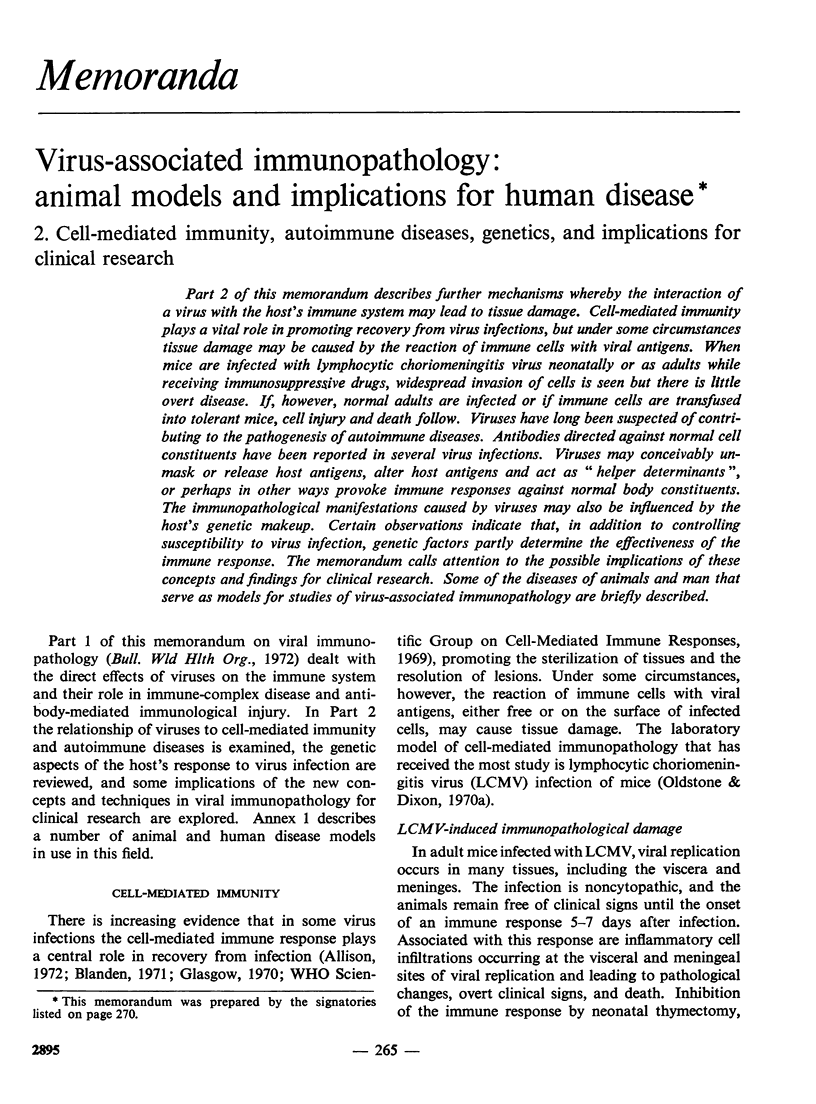
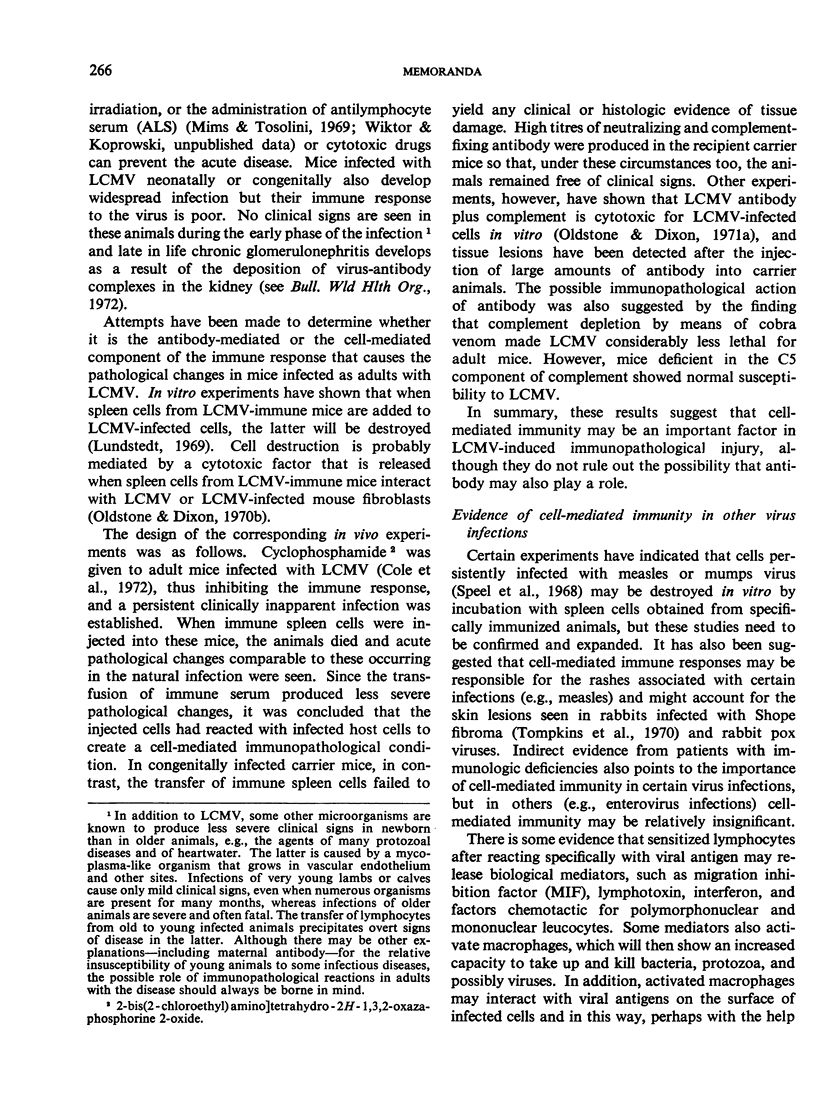

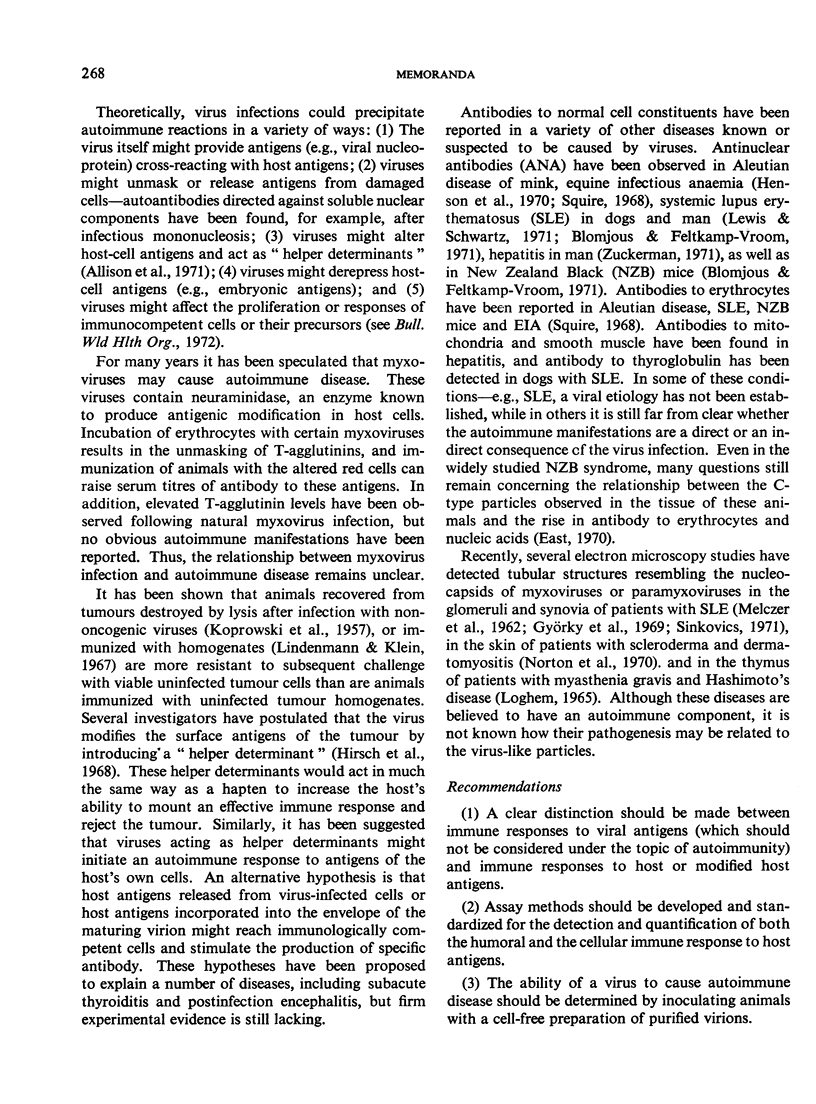
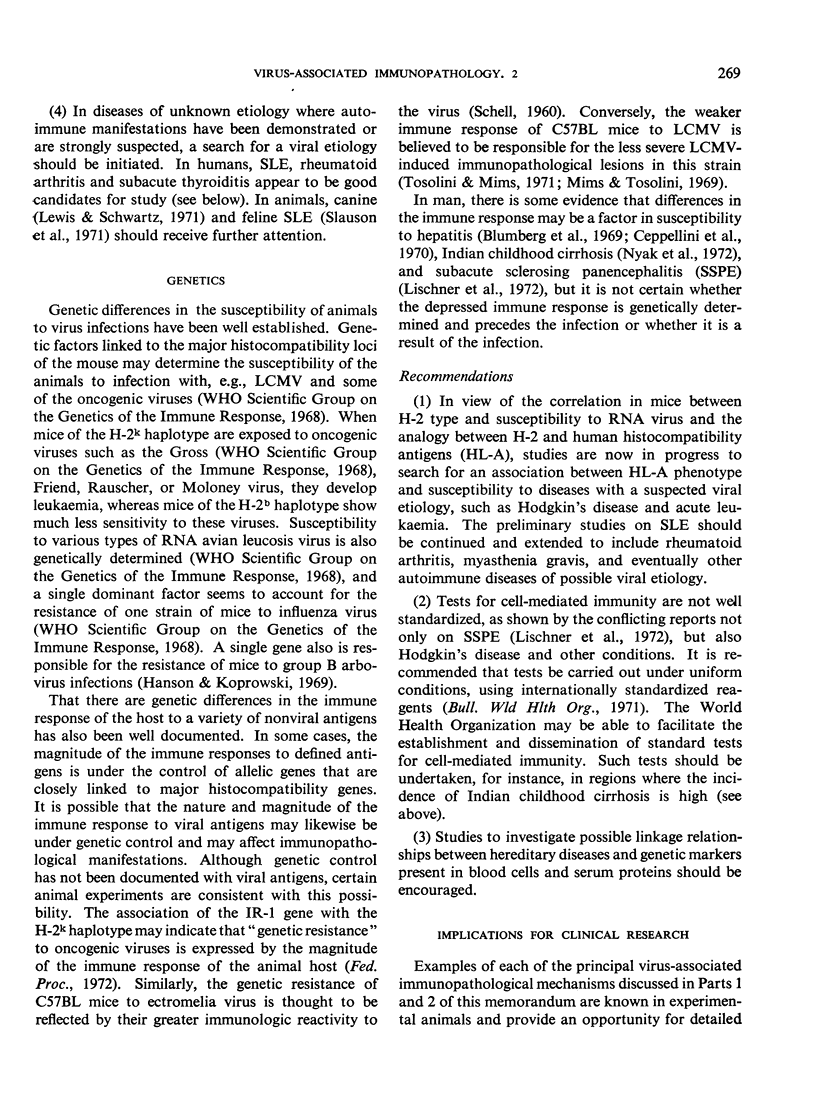
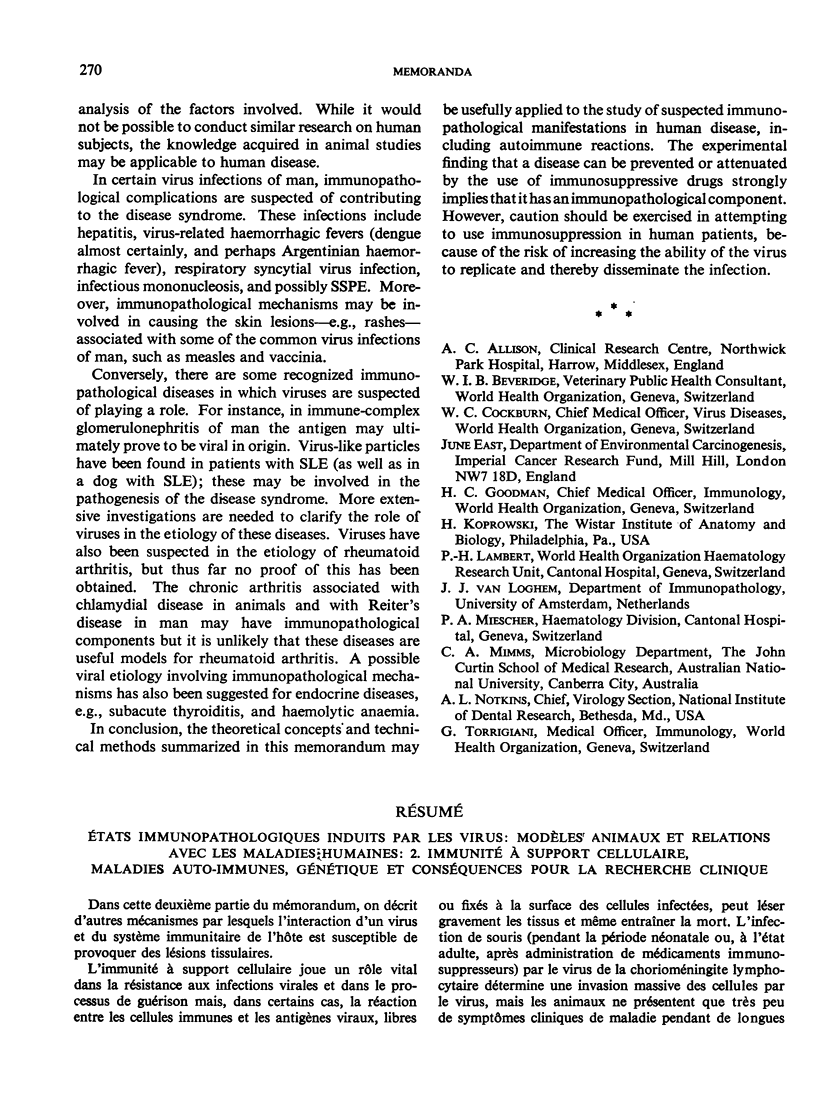
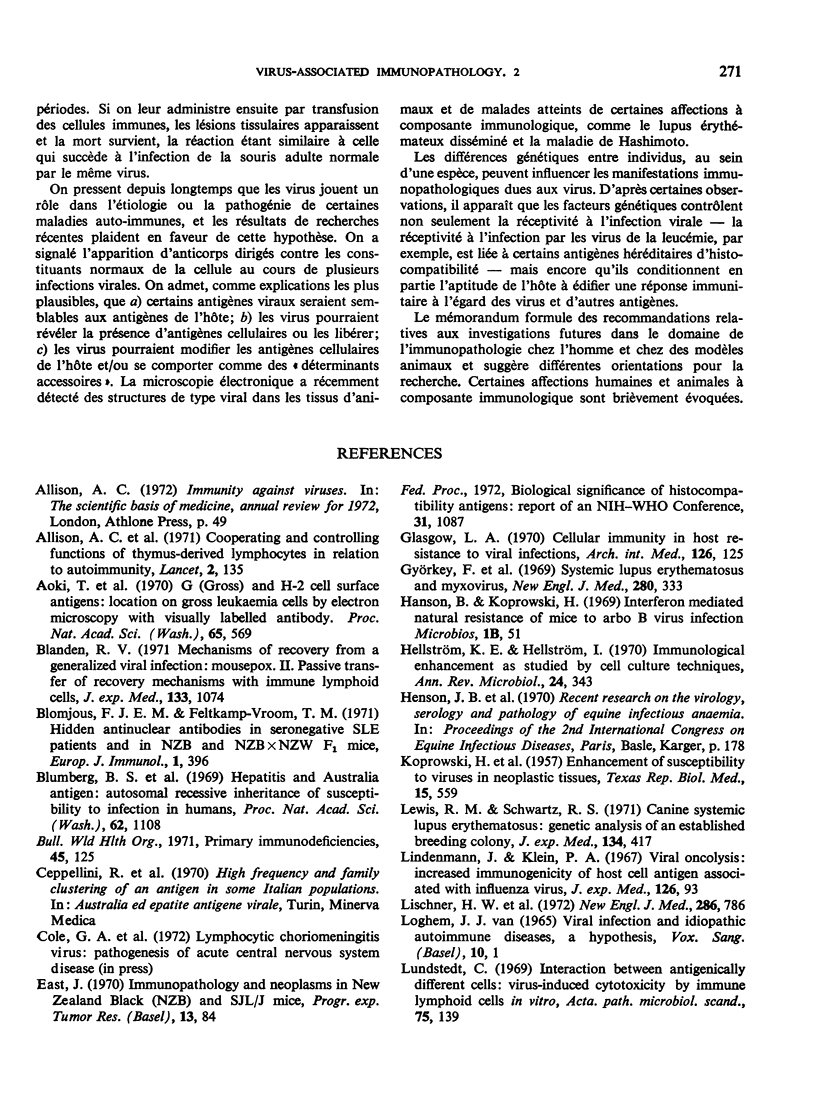
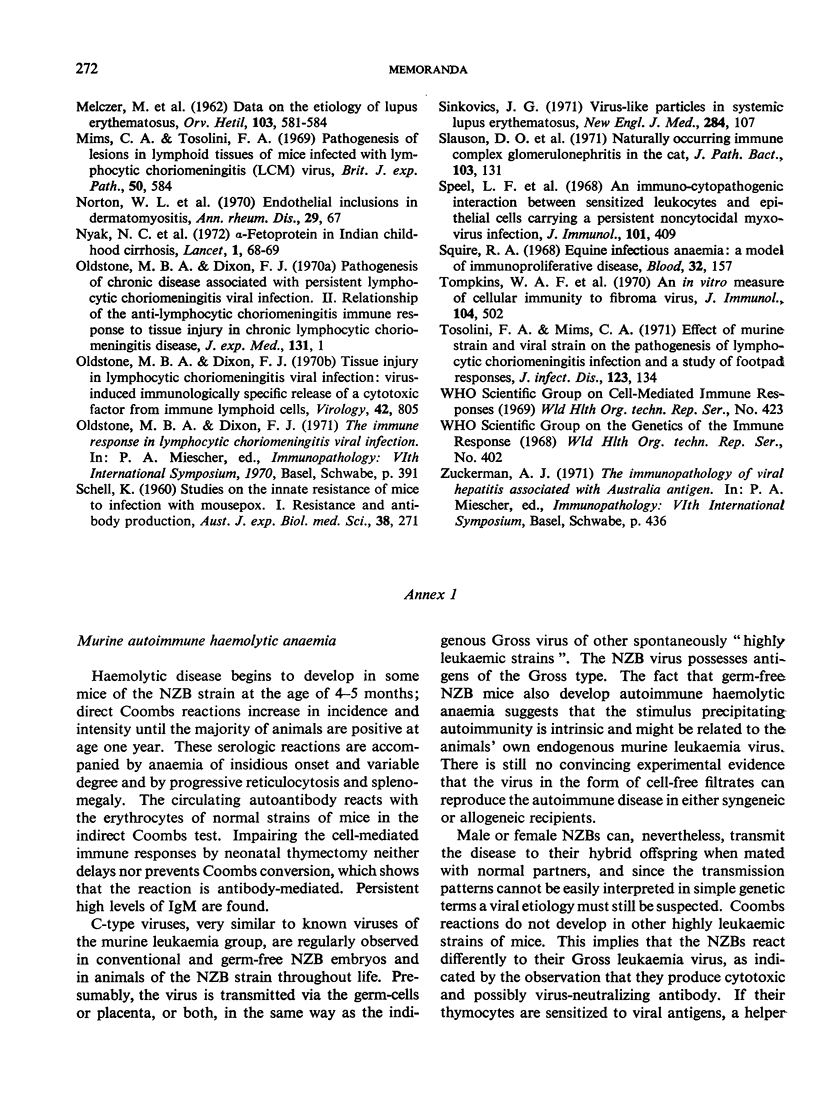
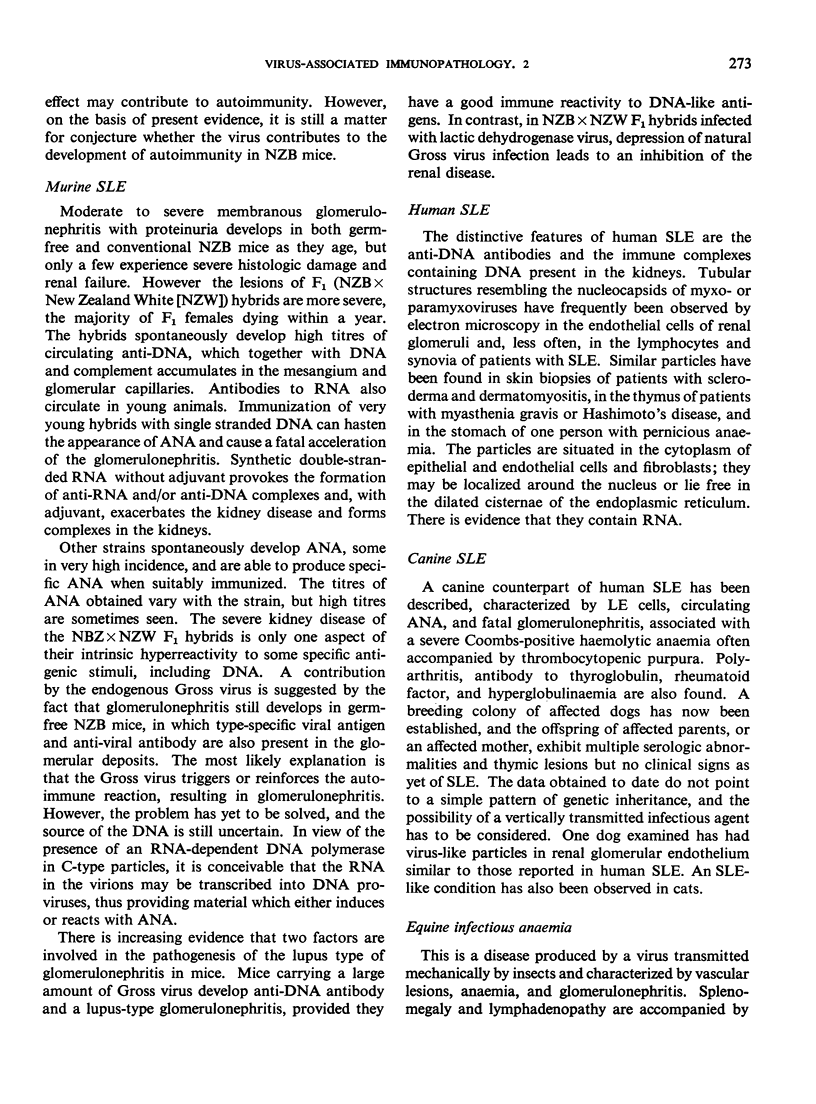
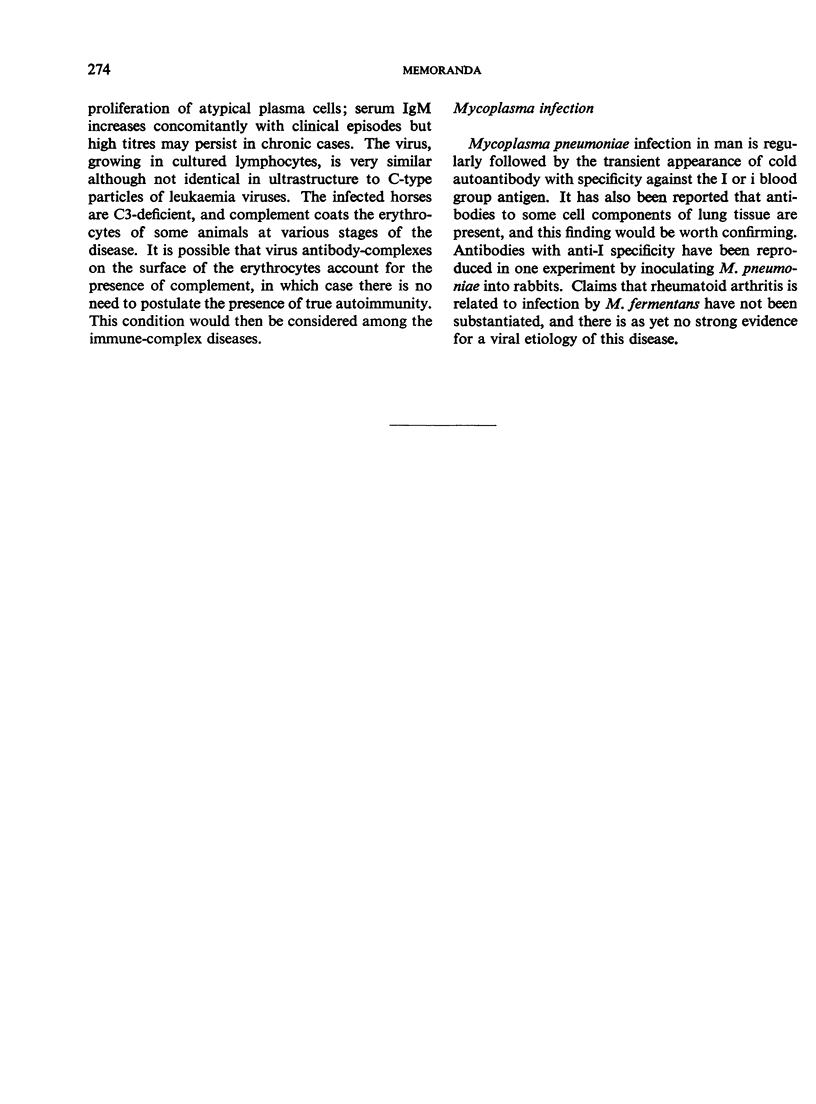
Selected References
These references are in PubMed. This may not be the complete list of references from this article.
- Allison A. C., Denman A. M., Barnes R. D. Cooperating and controlling functions of thymus-derived lymphocytes in relation to autoimmunity. Lancet. 1971 Jul 17;2(7716):135–140. doi: 10.1016/s0140-6736(71)92306-3. [DOI] [PubMed] [Google Scholar]
- Aoki T., Boyse E. A., Old L. J., De Harven E., Hämmerling U., Wood H. A. G (Gross) and H-2 cell-surface antigens: location on Gross leukemia cells by electron microscopy with visually labeled antibody. Proc Natl Acad Sci U S A. 1970 Mar;65(3):569–576. doi: 10.1073/pnas.65.3.569. [DOI] [PMC free article] [PubMed] [Google Scholar]
- Blanden R. V. Mechanisms of recovery from a generalized viral infection: mousepox. II. Passive transfer of recovery mechanisms with immune lymphoid cells. J Exp Med. 1971 May 1;133(5):1074–1089. doi: 10.1084/jem.133.5.1074. [DOI] [PMC free article] [PubMed] [Google Scholar]
- Blomjous F. J., Feltkamp-Vroom T. M. Hidden anti-nuclear antibodies in sero-negative systemic lupus erythematosus patients and in NZB and (NZB x NZW) F 1 mice. Eur J Immunol. 1971 Nov;1(5):396–398. doi: 10.1002/eji.1830010519. [DOI] [PubMed] [Google Scholar]
- Blumberg B. S., Friedlaender J. S., Woodside A., Sutnick A. I., London W. T. Hepatitis and Australia antigen: autosomal recessive inheritance of susceptibility to infection in humans. Proc Natl Acad Sci U S A. 1969 Apr;62(4):1108–1115. doi: 10.1073/pnas.62.4.1108. [DOI] [PMC free article] [PubMed] [Google Scholar]
- Glasgow L. A. Cellular immunity in host resistance to viral infections. Arch Intern Med. 1970 Jul;126(1):125–134. [PubMed] [Google Scholar]
- Györkey F., Min K. W., Sincovics J. G., Györkey P. Systemic lupus erythematosus and myxovirus. N Engl J Med. 1969 Feb 6;280(6):333–333. doi: 10.1056/nejm196902062800620. [DOI] [PubMed] [Google Scholar]
- Immunologic abnormalities in subacute sclerosing panencephalitis. N Engl J Med. 1972 Apr 6;286(14):786–787. doi: 10.1056/NEJM197204062861426. [DOI] [PubMed] [Google Scholar]
- KOPROWSKI H., LOVE R., KOPROWSKA I. Enhancement of susceptibility to viruses in neoplastic tissues. Tex Rep Biol Med. 1957;15(3):559–576. [PubMed] [Google Scholar]
- Lewis R. M., Schwartz R. S. Canine systemic lupus erythematosus. Genetic analysis of an established breeding colony. J Exp Med. 1971 Aug 1;134(2):417–438. doi: 10.1084/jem.134.2.417. [DOI] [PMC free article] [PubMed] [Google Scholar]
- Lundstedt C. Interaction between antigenically different cells. Virus-induced cytotoxicity by immune lymphoid cells in vitro. Acta Pathol Microbiol Scand. 1969;75(1):139–152. [PubMed] [Google Scholar]
- MELCZER M., HAMAR M., KISS G., ROKA E. [Data on the pathogenesis of lupus erythematosus]. Orv Hetil. 1962 Apr 1;103:581–584. [PubMed] [Google Scholar]
- Mims C. A., Tosolini F. A. Pathogenesis of lesions in lymphoid tissue of mice infected with lymphocytic choriomeningitis (LCM) virus. Br J Exp Pathol. 1969 Dec;50(6):584–592. [PMC free article] [PubMed] [Google Scholar]
- Oldstone M. B., Dixon F. J. Tissue injury in lymphocytic choriomeningitis viral infection: virus-induced immunologically specific release of a cytotoxic factor from immune lymphoid cells. Virology. 1970 Dec;42(4):805–813. doi: 10.1016/0042-6822(70)90330-2. [DOI] [PubMed] [Google Scholar]
- SCHELL K. Studies on the innate resistance of mice to infection with mousepox. I. Resistance and antibody production. Aust J Exp Biol Med Sci. 1960 Aug;38:271–288. doi: 10.1038/icb.1960.29. [DOI] [PubMed] [Google Scholar]
- Sinkovics J. G. Virus-like particles in systemic lupus erythematosus. N Engl J Med. 1971 Jan 14;284(2):107–108. doi: 10.1056/NEJM197101142840217. [DOI] [PubMed] [Google Scholar]
- Slauson D. O., Russell S. W., Schechter R. D. Naturally occurring immune-complex glomerulonephritis in the cat. J Pathol. 1971 Feb;103(2):131–133. doi: 10.1002/path.1711030208. [DOI] [PubMed] [Google Scholar]
- Speel L. F., Osborn J. E., Walker D. L. An immuno-cytopathogenic interaction between sensitized leukocytes and epithelial cells carrying a persistent noncytocidal myxovirus infection. J Immunol. 1968 Sep;101(3):409–417. [PubMed] [Google Scholar]
- Squire R. A. Equine infectious anemia: a model of immunoproliferative disease. Blood. 1968 Jul;32(1):157–169. [PubMed] [Google Scholar]
- Tompkins W. A., Adams C., Rawls W. E. An in vitro measure of cellular immunity to fibroma virus. J Immunol. 1970 Feb;104(2):502–510. [PubMed] [Google Scholar]
- Tosolini F. A., Mims C. A. Effect of murine strain and viral strain on the pathogenesis of lymphocytic choriomeningitis infection and a study of footpad responses. J Infect Dis. 1971 Feb;123(2):134–144. doi: 10.1093/infdis/123.2.134. [DOI] [PubMed] [Google Scholar]


